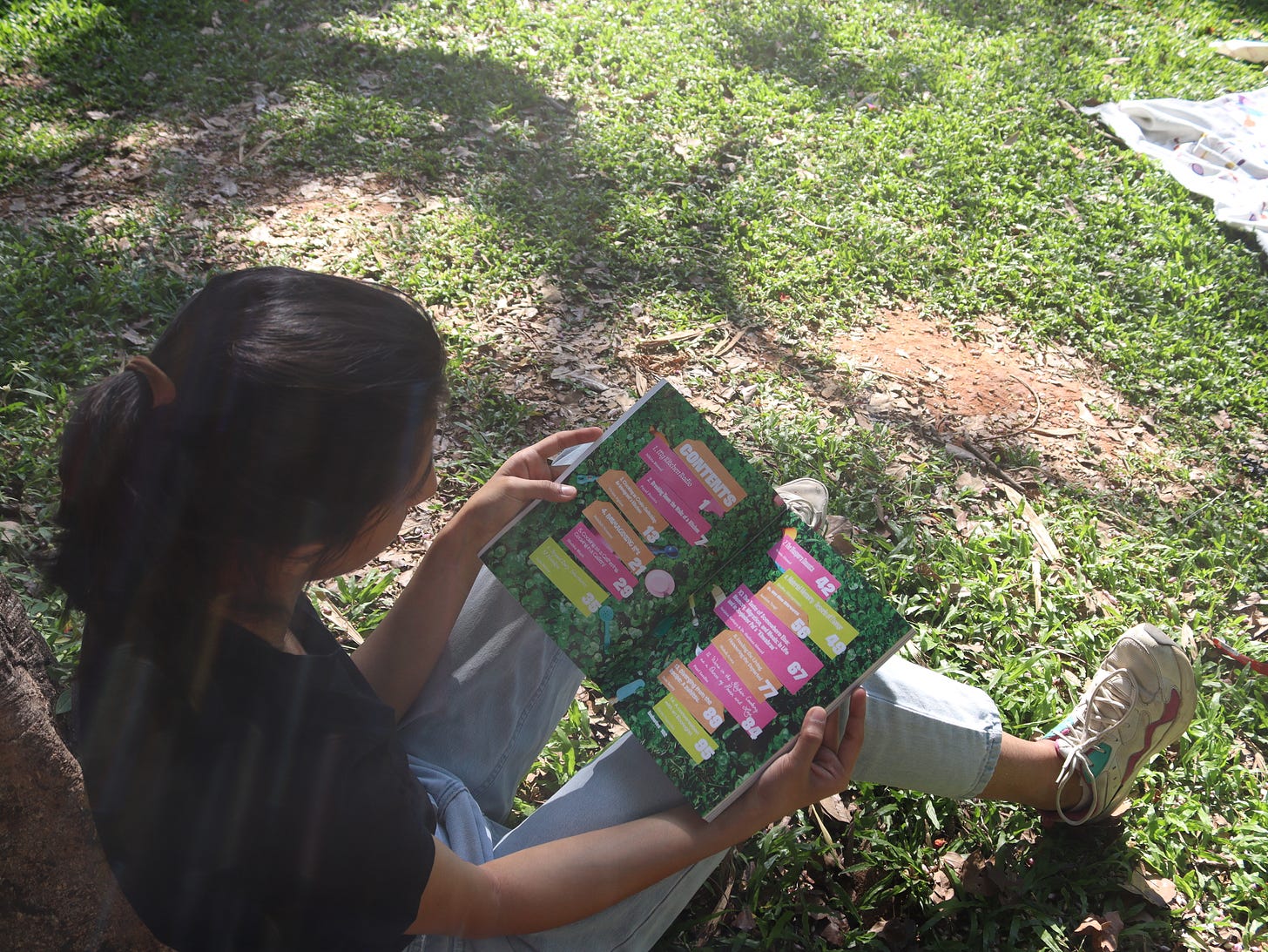Last week a friend asked me what I had been reading, and I laughed—“issue 3 drafts for the nth time.” As more questions followed, I found myself saying things I hadn’t even realised my mind was cooking—like a pressure cooker left on the stove and you only know if the dal is edible when you finally open it. The process of putting together this issue felt comparable—the handpicking quality ingredients, following a familiar recipe, tossing everything in, letting it come together with ample water to bind, and packaging it with the quiet certainty that comes from having done this before.
The cooking is seemingly ordinary. There are preconceived notions, biases, ideas, and expectations that come with putting together a theme, much like a bowl of pressure-cooked dal. My own experience of cooking is as deeply personal as it is strangely universal—some elements shared, others starkly different. But what made this issue particularly interesting was exploring how cooking interacts with the scope of dhoop’s bigger picture. We aren’t just talking about cooking in isolation, we are talking about how cooking interacts and engages with nature, culture, sustainability, and design.
Through this interaction, we wanted to expand our understanding—not just of cooking, but of seasonality, of design, of tech, of sustainability, and ultimately, of people. As we researched the issue, we put together a reading list to map varied perspectives and highlight the full spectrum of what the theme could hold. As we went through the pitches that came to us, I found us discovering ideas we didn’t anticipate, thoughts we hadn’t considered, and stories we were thrilled to read. It’s almost surreal to read stories from everywhere and feel a sense of wholeness attached to these unique voices. The contributors added to the theme of the issue a depth that was both unexpected and essential, almost like the way a good tadka transforms the dal. The process of editing was so much more fun with this issue’s guest editor Isha Maniar. Some people know just how much hing to add to get the flavour right.
For a long time, I don’t have language for the feeling that everyone else was born with a cookbook, and I had to build mine from scratch. When I learn the word neurodivergent, I hold it like an unfamiliar ingredient. I place it on the shelf next to my recipes. I sift through memories and watch as they gather into the strange shape of this word. A word for the strange shape of my life. I dust off old jars, parts of myself I preserved and put away. I twist their lids. I meet myself. I bubble with grief, with relief.
Devi Sastry, Diverging from the Recipe, Issue 3
With the final drafts in hand, our focus shifted to adding dhoop’s design and texture to the issue, the salt that makes every other thing sing. Navyaa Shah, my creative collaborator, and I built the visuals of the magazine with our foundation of stories, and it shows. The commitment to every story is the same and it reflects—every layout is crafted bit-by-painstaking-bit using the words of the writers. We were quite determined (dogged, even) in our pursuit to extract and imagine whatever we could to deliver the justice each piece deserves.
Not only was the music almost always something I hadn’t heard before, it was also endless, refreshing and non-circuitous. The radio cycled through the moods of my day like a clock. From early morning blues to soul for that unavoidable post-lunch slump, then jazz to pick up speed again once the sun set. How does one describe music? I knew these were the wrong words, and yet on a long day it felt oily. In the mornings light, bubbly, tart. In the dim evening, hot, tender, at times intoxicating.
Nikita Biswal, Kitchen Radio, Issue 3
To hold this effort that took a village and flip through its pages will never get old. My excitement at the nth draft remains the same. I felt it when Nikita Biswal took me into her kitchen, where she cooks alongside a lyrical, melodious companion. When Devi wrote about the chaos in her kitchen mirroring the chaos in her head, I felt both attacked and comforted, knowing that I am not alone. Nabilah’s writing held up a mirror, filled with the rotten veggies in the corners of my fridge and compelled me to think about how less is more, and how more sometimes could be wasteful. I got lost into an unfamiliar world through Sanjana’s writing, only to find a world of my own making, which mostly always starts with cooking familiar foods in unfamiliar, sometimes faraway lands. Mahek’s words weaved a circle of life, ending on the certainty of food rituals that come with the grief that accompanies bereavement.
Do specific dishes elicit a sense of solace or exacerbate grief? Are there specific cooking methods, like boiling or frying, for instance, that are preferred in mourning rituals? How do cultural, religious, and practical considerations shape what is consumed during these periods?
Mahek Arora, Feeding the Living, Honouring the Departed, Issue 3
Each of the stories in this issue renewed my understanding of cooking—as a practice, sure, but perhaps more importantly, as an understanding, as a language, as a memory, and in transit. And, I hope it does the same for you.
This editor’s note by Rini Singhi is an excerpt from the magazine. The note was edited by Isha Maniar. Over the next few weeks we will restart sending newsletters out consistently. Thank you for supporting us throughout the printing process of Issue 3.
~
Food is a portal to understanding our world, our communities and ourselves. It provides a unique and critical perspective on everything—from everyday habits to global issues, from the way we design our countries, cities to how we navigate climate crises.
dhoop uses food as a lens. Through this lens, we can interrogate culture, sustainability, design and the systems that sustain life. Initially, we started as a magazine focused on stories of food and its intersections. Over time, it has grown into something more profound—a space, a research platform, embracing a multidisciplinary approach that invites collaboration and deeper inquiry.








